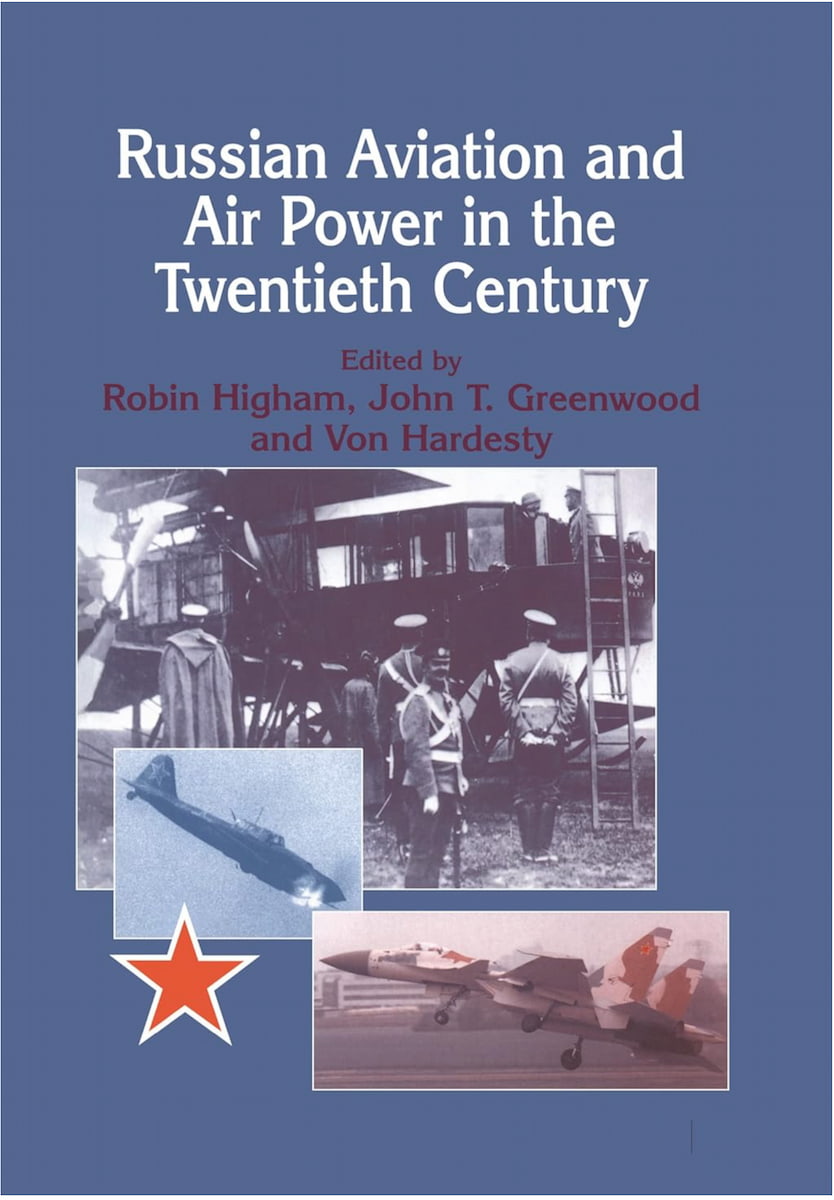
Ed. Robin Higham, John T. Greenwood, and Von Hardesty
“From Chaos to the Eve of the Great Patriotic War, 1922-41,” in
Russian Aviation and Air Power in the Twentieth Century
Publisher: Routledge
ISBN: 978-0714643809
Publication date: 1997
In 1977, Robin Higham and Jacob Kipp edited Soviet Aviation and Air Power, the first comprehensive study of Russian aviation. This new volume brings together both new editors and new contributors, to take a fresh look at Russian and Soviet aviation in the twentieth century.” “Since the collapse of the Soviet Union in 1990, new archives have become available as well as new perspectives, and all the contributors to this new volume have based their research on newly available material. While some chapters update those in the 1977 work, most break new ground, such as those dealing with the aircraft industry, the designers, and Soviet Air combat on the periphery.
CONTENTS:
Introduction / Robin Higham, John T. Greenwood and Von Hardesty — 1. Early Flight in Russia / Von Hardesty — 2. From Chaos to the Eve of the Great Patriotic War, 1922-41 / Reina Pennington — 3. Soviet Frontal Aviation during the Great Patriotic War, 1941-45 / John T. Greenwood — 4. Aviation and the Transformation of Combined-Arms Warfare, 1941-45 / Tom Alison and Von Hardesty — 5. Russian and Soviet Naval Aviation, 1908-96 / Christopher C. Lovett — 6. The Aviation Industry, 1917-97 / John T. Greenwood — 7. The Designers: Their Design Bureaux and Aircraft / John T. Greenwood — 8. The Defense of Russian Aerospace / Dennis J. Marshall-Hasdell — 9. Air Combat on the Periphery: The Soviet Air Force in Action during the Cold War, 1945-89 / Mark A. O’Neill — 10. The Rise and Fall of Aeroflot: Civil Aviation in the Soviet Union, 1920-91 / David R. Jones — Epilogue / Robin Higham.
from Reina Pennington’s essay on “From Chaos to the Eve of the Great Patriotic War, 1922-41”
“The Soviets lacked solid operational plans to support theoretical concepts. During the interwar period, the Soviets had several opportunities to battle-test their personnel and equipment and to evaluate the capabilities and tactics of their potential enemies: the Germans, the Finns, and the Japanese. They had the chance to develop their tactics and to test concepts like strategic bombing and fighter escort. But many of these concepts never made the leap from theory to practice. One reason for the destruction of so many Soviet bombers during the first days of the war was the total lack of fighter escorts . . .
“There were serious problems in the Soviet Air Force by 1941. The rapid changes in VVS leadership were, at the very least, disruptive and unsettling; at worst, they directly contributed to the disastrous defeats of June 1941. If capable and experienced leaders like Alksnis and Smushkevich had been allowed to retain command, they might have provided greater continuity and direction. The purge of the officer corps was far more devastating to the VVS than to the other services. The purges not only affected leadership, as in the other services, but the equivalent of the rank and file: most of the actual combat personnel in aviation were officers. The purges also removed many aviators who had accumulated combat experience during the wars of the 1930s, leaving the VVS to begin the war with an excessive number of young and inexperienced pilots . . .
“It was largely the legacy of the purges that led to a disastrous reluctance to change VVS practice to reflect theory and the lessons learned in previous wars. Still, the foundations for change had been laid. The Soviet Air Force could never have recovered from its near-destruction in 1941 to defeat the Luftwaffe without relying on the hidden resources developed in the 1930s.”
